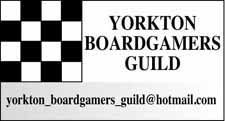One of the first abstract strategy games I ever played was checkers, so it is time to cover the game in what will be a two-part piece.
At the time I had no concept of 'perfect information' strategy games, how they were a straight battle of two players ability to out think the other.
Instead, checkers was a game my grandfather played. He taught me how, and we played.
And we played.
On occasion I am sure I won, but I don't recall that as happening too often.
As I grew older, I sort of outgrew checkers.
I suppose I felt it lacked the depth of chess, and of course decades later along came Terrace and Arimaa and other games, all offering more than checkers.
Yet checkers has remained a game with legions of fans.
There are various incarnations of the game.
"International draughts (also called Polish draughts or international checkers) is a strategy board game for two players, one of the variants of draughts. It is played on a 10×10 board with alternating dark and light squares, of which only the 50 dark squares are used. The two players are at opposite sides, with 20 pieces each, light for one player and dark for the other. In conventional diagrams the board is displayed with the light pieces at the bottom and dark at the top and in this orientation the lower-left corner square must be dark," noted Wikipedia.
By comparison Wikipedia also details, "English draughts (British English) or checkers (American English and Canadian English), also called American checkers or straight checkers is a form of the board game draughts. Unlike international draughts, it is played on an eight-by-eight squared board (with sixty-four total squares) with twelve pieces on each side. The pieces move and capture diagonally. They may only move forward until they reach the opposite end of the board, when they are crowned or kinged and may henceforth move and capture both backward and forward.
As in all draughts variants, English draughts is played by two people, on opposite sides of a playing board, alternating moves. Traditionally the pieces are black, red, or white. The opponent's pieces are captured by jumping over them."
What I find interesting is that checkers is one of the few board games to have national organizations in place; chess, backgammon and a few others come to mind but the list is short compared to how many games are out there.
In Canada there is the Quebec Draughts Association -- http://dames.quebecjeux.org/
Stateside there is the International Checkers Association of North America (ICAONA) at www.icaona.org/
And the American Checker Federation --www.usacheckers.com
Having such support means sanctioned tournaments and players' rankings which go a long way toward growing a game.
In terms of checkers, at least as most recognize the game there are also Canadian Checkers, a sadly under-known variant which we in this country should be embracing.
The game seems to be played mainly in Quebec, according to sources I have seen.
It is played on a 12 x 12 board of 144 squares with 30 pieces on a side.
Un-promoted pieces can capture forward or backward. A promoted piece (queen) moves like a chess bishop, and can capture a piece anywhere along its line of movement.
One of the rules that set it apart from Draughts and Checkers is Compulsory Capturing. Once begun, you must take all the pieces you are able without stopping short. To do so means the forfeiture of your piece.
The size of board and number of pieces makes for a dramatically different game than most will know from checkers.
I am not sure commercial sets are available, but it is worth putting some effort into making a set to play something with apparent roots in our country.
Next week, a look at some of the modern variants of checkers.



